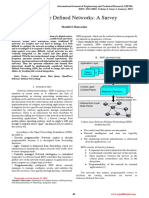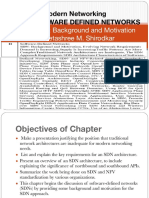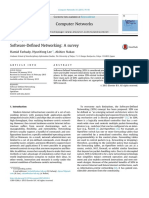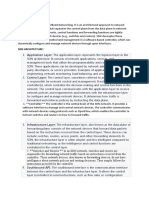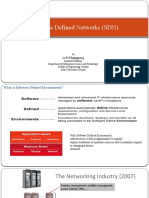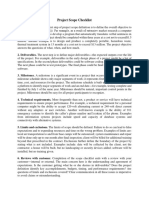0% found this document useful (0 votes)
28 views18 pagesModule 2 - Part A
Software Defined Networking (SDN) separates control functions from forwarding functions, enhancing automation and programmability in networks. It consists of three layers: application, control, and infrastructure, which communicate via northbound and southbound APIs. While SDN offers benefits like centralized management and reduced costs, it also faces challenges such as security risks and a lack of standardization for APIs.
Uploaded by
kesanakurthivenkataramanaCopyright
© © All Rights Reserved
We take content rights seriously. If you suspect this is your content, claim it here.
Available Formats
Download as PDF, TXT or read online on Scribd
0% found this document useful (0 votes)
28 views18 pagesModule 2 - Part A
Software Defined Networking (SDN) separates control functions from forwarding functions, enhancing automation and programmability in networks. It consists of three layers: application, control, and infrastructure, which communicate via northbound and southbound APIs. While SDN offers benefits like centralized management and reduced costs, it also faces challenges such as security risks and a lack of standardization for APIs.
Uploaded by
kesanakurthivenkataramanaCopyright
© © All Rights Reserved
We take content rights seriously. If you suspect this is your content, claim it here.
Available Formats
Download as PDF, TXT or read online on Scribd
/ 18









